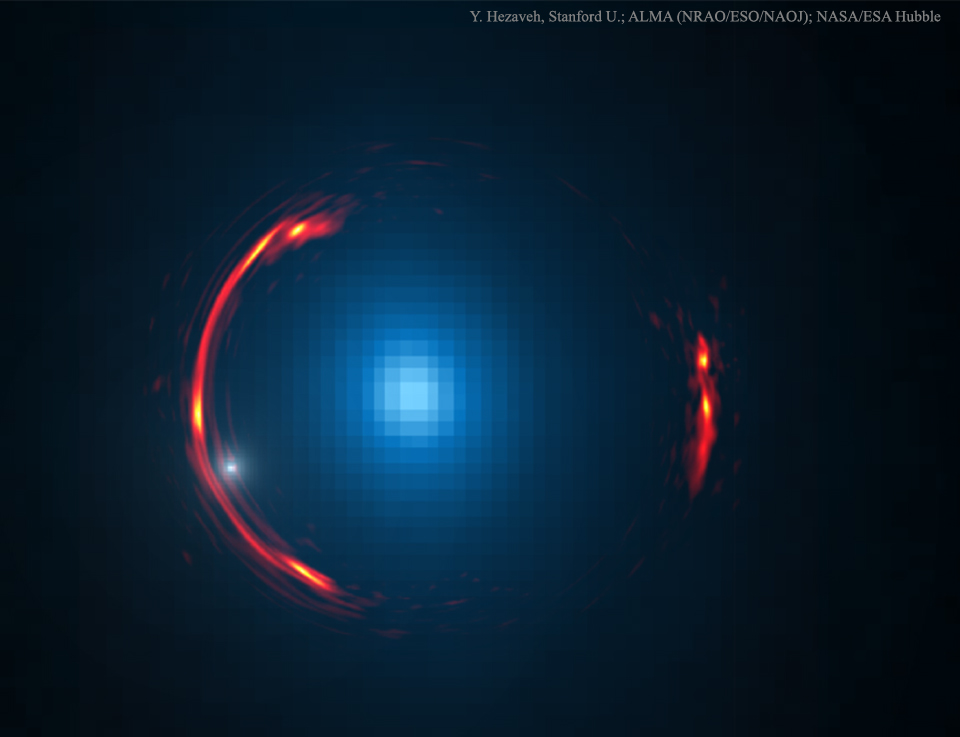
Copyright:
原文:
Can one galaxy hide behind another? Not in the case of SDP.81. Here the foreground galaxy, shown in blue in an image taken by the Hubble Space Telescope, acts like a huge gravitational lens, pulling light from a background galaxy, shown in red in an image taken in radio waves by the Atacama Large Millimeter Array (ALMA), around it, keeping it visible. The alignment is so precise that the distant galaxy is distorted into part of a ring around the foreground galaxy, a formation known as an Einstein ring. Detailed analysis of the gravitational lens distortions indicate that a small dark satellite galaxy participates in the deflections, bolstering indication that many satellite galaxies are quite dim and dominated by dark matter. That small galaxy is depicted by a small white dot on the left. Although spanning only a few arcseconds, the featured Einstein ring is really tens of thousands of light years across. Comments, questions? Just click the Discuss link two lines below.
中文翻譯:
在宇宙中,確實有可能一個銀河在另一個銀河的背後。然而,在 SDP.81 的情況下,前景銀河(以藍色顯示)透過哈勃太空望遠鏡拍攝的影像,其實充當了一個巨大的重力透鏡,吸引了來自背景銀河(以紅色顯示,透過阿塔卡馬大型毫米波陣列(ALMA)拍攝的無線電波影像)的光,讓我們依然能夠觀察到它。兩者的對齊如此精確,以至於遙遠的銀河被扭曲成環繞前景銀河的一部分,這樣的構造稱為愛因斯坦環。對於重力透鏡扭曲的詳細分析指出,一個小型的暗衛星銀河也參與了光的偏折,這進一步強化了許多衛星銀河可能相當暗淡且以暗物質為主導的證據。這個小銀河在圖像中的左側以小白點表示。儘管這個愛因斯坦環僅跨越幾弧秒,但實際上其範圍達到數萬光年。
#重力透鏡 #愛因斯坦環 #宇宙探索 #深空 #銀河 #暗物質 #哈勃太空望遠鏡 #阿塔卡馬大型毫米波陣列 #天文學 #科學分享
來源:NASA每日圖片


